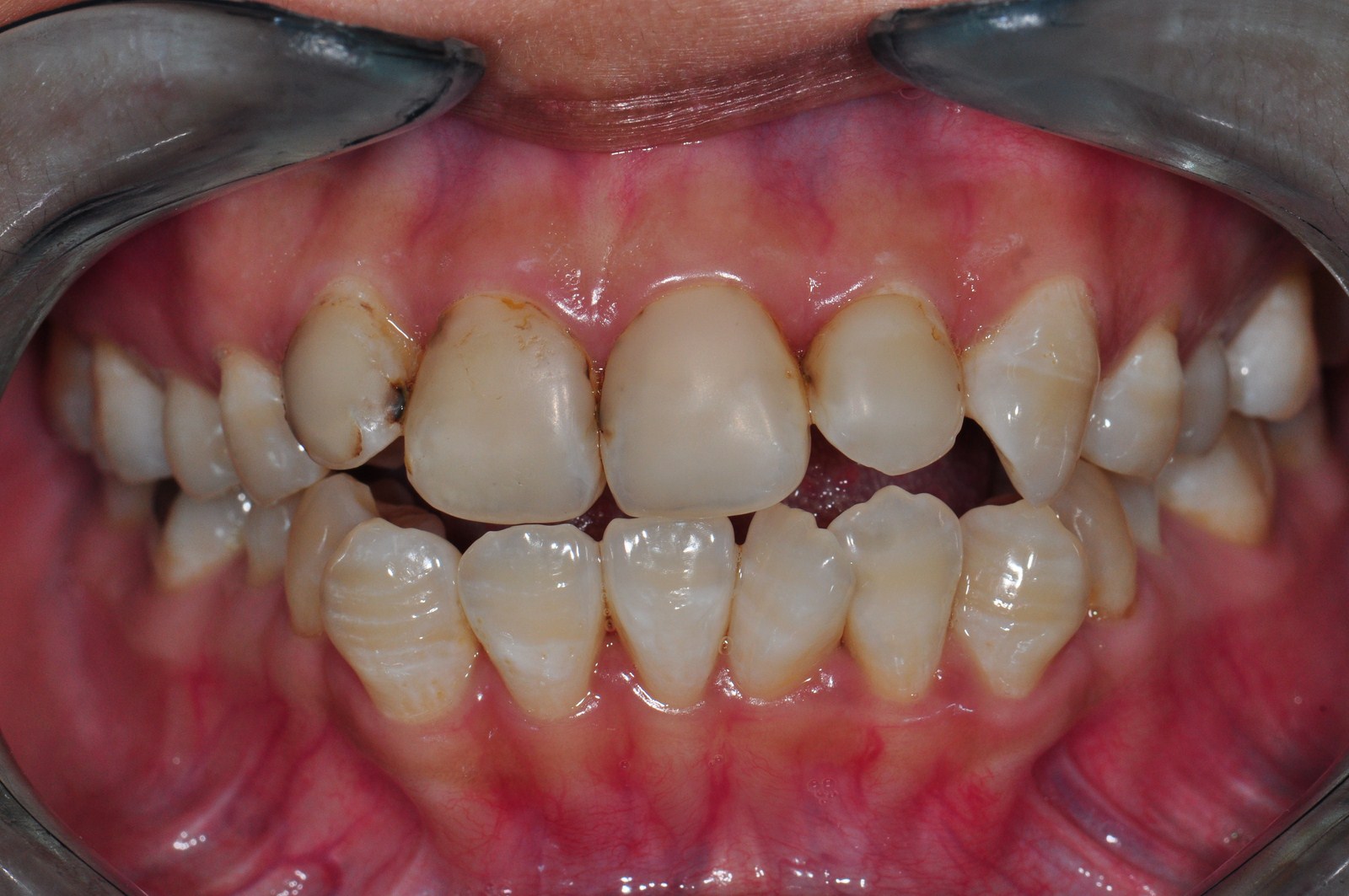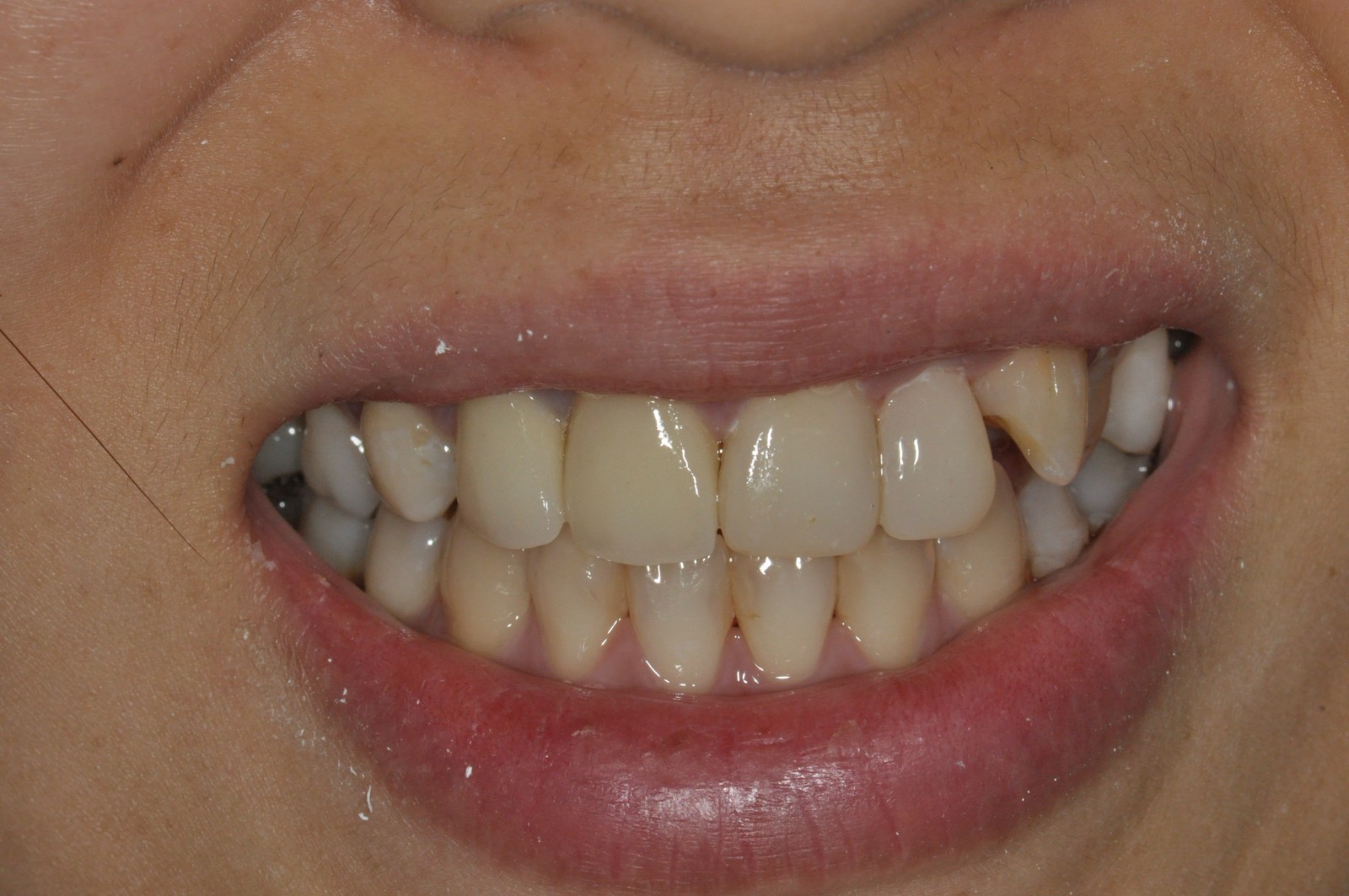
Resin Veneers or better know as composite veneers are thin shells of tooth-colored, translucent filling, custom made to fit over teeth and improve their color, shape and overall appearance. Placement of composite veneers can dramatically improve your smile and appearance.
Composite veneer technique
Types of problems that composite veneers can correct
Placement of dental veneers is sometimes referred to as “instant orthodontics” because they can be used to cover a variety of dental problems involving teeth in the “smile zone” including:
- Spaces between the teeth.
- Conical or ‘peg’ shape lateral incisor.
- Poorly shaped or crooked teeth.
- Broken or chipped teeth.
- Permanently externally stained and/or internally stained teeth.
- Unsightly or stained fillings.



Dental veneers (either composite or porcelain veneer) can improve the appearance of the teeth but they cannot realign the jaw or correct overbites and underbites. Orthodontics are required to correct these more complicated problems.
The advantages of composite resin veneers vs. porcelain veneers
- Composite veneers can be done on the spot. The time spent might be from 30 minutes to 2 hours or more depends on the number of tooth involved. They do not required second visit.
- Composite veneers produce the same aesthetic result as porcelain veneers. Therefore, no one can tell whether you have a composite or porcelain done except your dentist!
- Composite veneers can be repair if there is any chipping or fracture.
- Composite veneers are very cheap (From MYR150 toMYR250 per tooth; depends on how difficult and big the defect is).
The major disadvantages of porcelain veneers over composite resin include the following:
- Porcelain veneers are not made at chairside. Porcelain veneers are fabricated in a dental laboratory and therefore require at least two visits. Composite resin veneers are accomplished in one visit. An adequate amount of tooth structure is removed to allow for placement of composite resin in the desired shape without added tooth bulk. Bonding agent is applied. Composite resin is then added, light cured, then finished and polished.
- Porcelain veneers are more expensive than composite veneers. The placement of veneers requires more time, expertise and resources in order to fabricate and bond and therefore cost more.
- Porcelain veneers cannot be repaired. If they break porcelain veneers must be replaced.
The advantages of porcelain veneers
Porcelain veneers have several advantages compared to composite resin including:
- Porcelain veneers are very durable. Although porcelain veneers are very thin, usually between 0.5 – 0.7 millimeters and inherently brittle, once bonded to healthy tooth structure it becomes very strong. Porcelain veneers can last for many years, usually 10-15 years, if you take good care of them using good oral hygiene and avoiding using them to crack or chew hard objects like ice.
- Porcelain veneers create a very life-like and natural tooth appearance. The translucent properties of the porcelain allows the veneers to mimic the light handling characteristics of enamel giving it a sense of depth which is not possible with other cosmetic bonding materials such as composite resin.
- Porcelain veneers resist staining. Unlike other cosmetic dental bonding materials, porcelain is a smooth, impervious ceramic and therefore will not pick up permanent stain from cigarette smoking or from dark or richly colored liquids or spices.
- Porcelain veneers are conservative. Only a small amount of tooth structure is removed, if any during the procedure.
Cases done in our practice using composite veneers…
Case 1

This young man complaint of generalized spacing and a peg-shaped right lateral incisor. Composite material was used to close all the gaps between his teeth (Below).
Case 2

This patient fell down and broke her front teeth while playing spot. The tooth was restore with composite veneer. ‘Stained’ or chalky white patches resin composite was place on the front surface of the veneer to mimic the neighbour teeth (Below).

Case 3

Old filling at the center of his upper front teeth looked yellowish and rough. Those fillings were removed and replaces by new composite veneers (Below).

Case 4

Yellow stain due to uneven surface at the front teeth and old yellow filling were replace by composite veneers (Below).

Case 5
Multiple decays at the front teeth were treated with composite veneer (Below).
Case 6

Defect of the lateral incisor was repaired with resin composite (Below).

Case 7

Generalize unevenness of this young man front teeth gave a older look. With composite veneer correction, he looks youthful again!! (Below).
Case 8
Old composite veneers on all the six front teeth on this lady was stained at the margin. The composite were removed and were replaced with the new one (Below).
Are you a good candidate for dental veneers?
Dental veneers are not appropriate for everyone or every tooth. Case selection is an extremely important factor in the success of this technique. Veneering teeth is not a reversible procedure if tooth structure must be removed to achieve your desired result Only an examination by your dentist can determine whether dental veneers are appropriate for making the changes you want. Some of the situations where certain teeth or people are not good candidates for dental veneers include:
- Unhealthy teeth. Dental decay and active gum disease must be treated prior to fabricating and bonding dental veneers.
- Weakened teeth. If a significant amount of tooth structure is missing or has been replaced by a large filling the teeth will not be strong enough to function with a dental veneer.
- Teeth with an inadequate amount of enamel present. Dental veneers are more successfully bonded onto tooth enamel.
- People who habitually clench or grind on their teeth. Habitual clenching and grinding of the teeth can easily chip or break dental veneers. Dental nightguards may be a solution for this in some cases.
- Persons without a stable bite.
- Severely malpositioned teeth or misaligned teeth. Orthodontic treatment may be required to achieve the desired result.
How to maintain Dental Veneers?
Dental veneers can chip or come off if not cared for properly. To improve their durability and longevity you need to maintain consistent good oral hygiene and have regular dental examinations and cleanings at least twice each year. In addition, you must avoid using them to bite or crack hard objects like nuts and ice.
What are the alternatives to composite veneers?
The closest cosmetic alternative to composite veneers is porcelain veneers which are more durable and more resistance to staining. However, they are more costly and require at least 2 visits. On top of that, there is another method to improve smile: Snap-on Smile, a multi-purpose restorative appliance that requires no preparation or altering of tooth structure, no injections, and no adhesives. It is non-invasive, making it completely reversible.
Dental crowns may also be used to correct the same problems that dental veneers correct, however it is a much less conservative procedure.
More info..
…














































![DSC_0007 [1600x1200]](https://prestige-dental-care.com.my/wp-content/uploads/2011/02/DSC_0007-1600x1200.jpg)

































